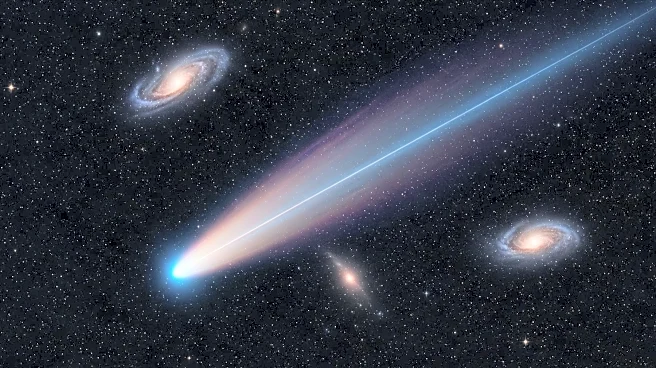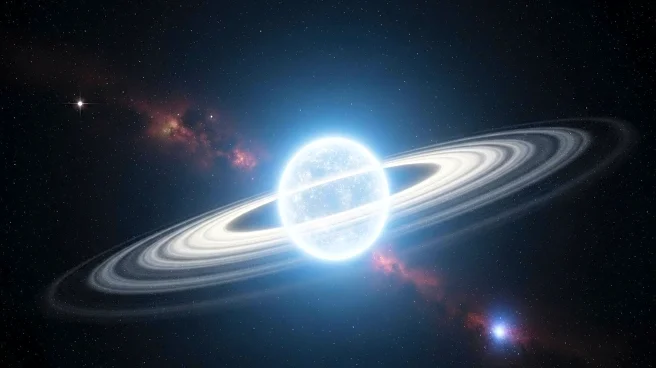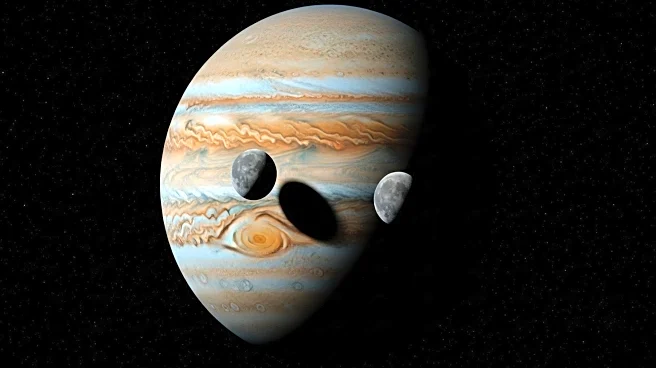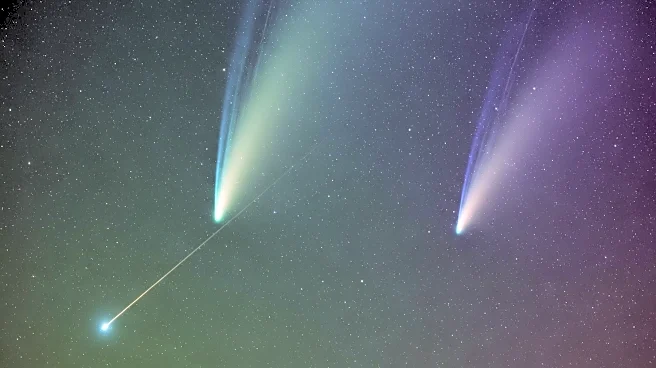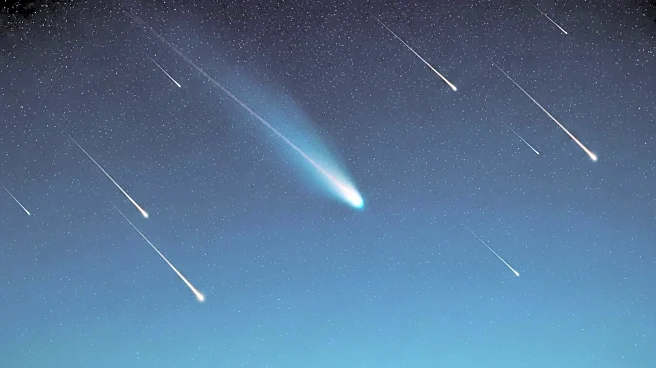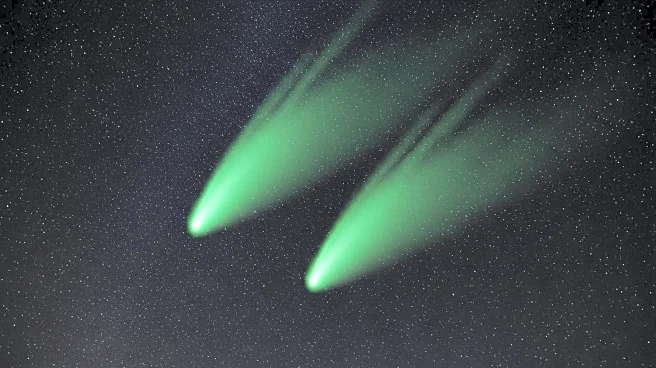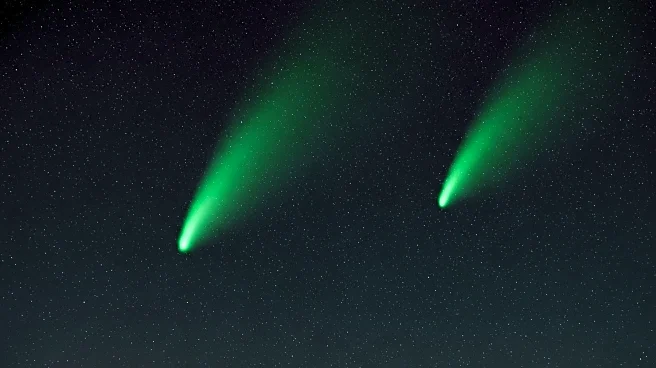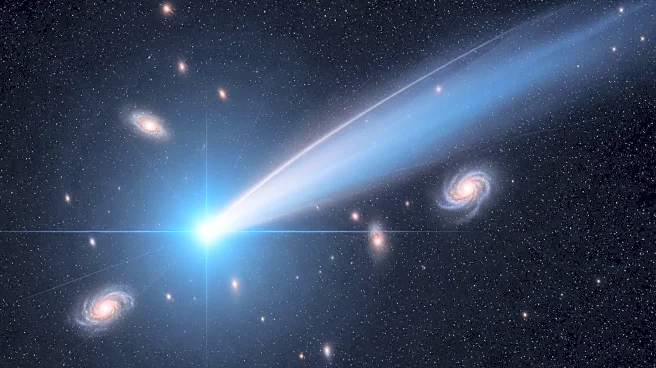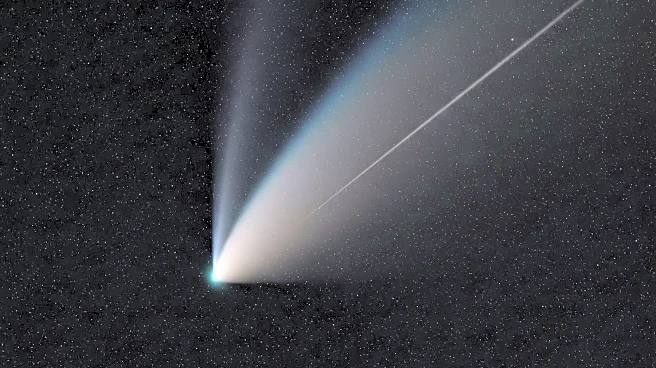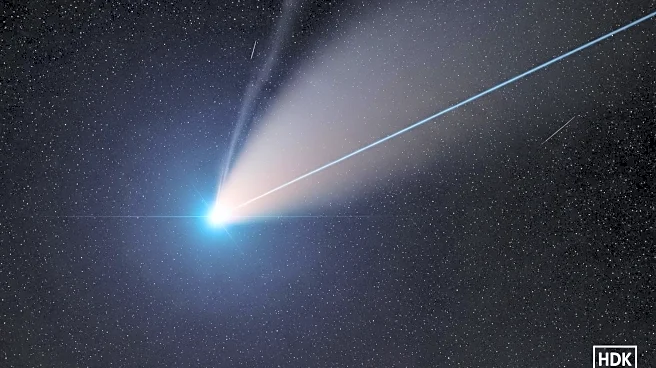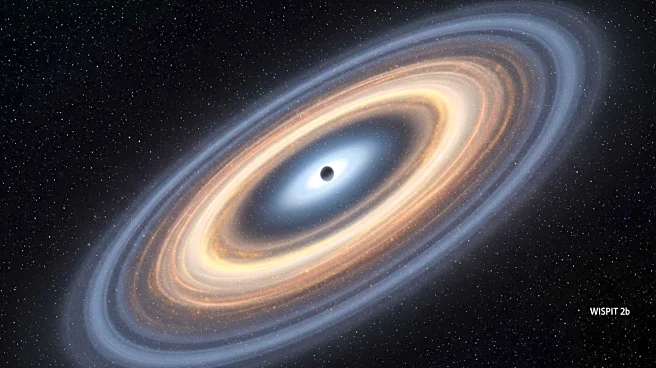What is the story about?
What's Happening?
NASA has announced that Comet Lemmon (C/2025 A6) will be visible in the night sky this month, offering a rare opportunity for observers to see it without the aid of telescopes or binoculars. Discovered by the Mount Lemmon Survey in Arizona in January, the comet is expected to be at its brightest on October 21, coinciding with the new moon, which will provide optimal viewing conditions. Comet Lemmon's closest approach to Earth will be approximately 56 million miles away, and its orbital period will be reduced from 1,350 years to about 1,150 years after passing by the Sun's gravitational field in November. This means that if missed this year, the comet will not be visible again until 3175.
Why It's Important?
The visibility of Comet Lemmon presents a unique opportunity for both amateur and professional astronomers to observe a celestial event that occurs once in a millennium. Such events can inspire public interest in astronomy and science, potentially influencing educational pursuits and scientific careers. Additionally, the study of comets like Lemmon can provide valuable insights into the composition and behavior of these cosmic bodies, contributing to our understanding of the solar system's history and evolution. The event also highlights the importance of astronomical surveys and collaborations in discovering and tracking celestial objects.
What's Next?
Observers in the Northern Hemisphere are encouraged to watch for Comet Lemmon in the morning sky, with its trajectory allowing for evening visibility as the month progresses. Astronomers will continue to monitor its brightness and path, providing updates to ensure accurate predictions for future observations. The comet's passage through the solar system may also lead to further studies on its composition and potential interactions with other celestial bodies. As interest grows, educational institutions and observatories may organize events to facilitate public viewing and engagement.
Beyond the Headlines
The appearance of Comet Lemmon underscores the dynamic nature of our solar system and the ongoing need for scientific exploration. It serves as a reminder of the vastness of space and the many mysteries that remain to be uncovered. The event may also spark discussions on the role of technology in advancing our ability to detect and study distant objects, as well as the importance of international cooperation in sharing data and resources for astronomical research.
AI Generated Content
Do you find this article useful?
